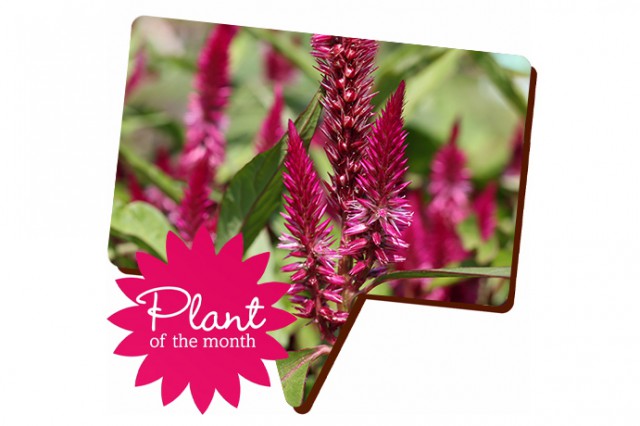July's Plant of the Month

Our plant of the month for July is the Celosia! A variety of plants produce vibrant and dazzling displays of flowers, lasting for several months at a time. Often referred to as a ‘love them or hate them’ plant, the unusual appearance of these plants certainly makes for a good talking point.
What are Celosia plants?
A half-hardy annual, the Celosia is a flowering plant that’s perfect for livening up your flower beds over the summer. They come in three varieties: Plume Celosia, Cockscomb Celosia and Wheat Celosia. They can be used as annuals outdoors or kept alive for longer indoors as houseplants.

Origin: Native to Africa, West Indies and South America Characteristics: Plume Celosia: Long slender green leaves with feathery, vibrant flower heads - Cockscomb Celosia: Same foliage but with carnation-like flower heads that have an unusual wiggly petal pattern - Wheat Celosia: Again, same foliage, but with long thin flower heads that look like ears of wheat Preferred neighbours: Zinnias, Dahlias or other annuals
Top Tip: Planting your Celosias next to your vegetable patch will encourage pollination and fruit set on your vegetable plants Fun fact: Celosias are non-toxic to humans, cats, and dogs - making them a pet-friendly houseplant
Are Celosias easy to grow?
Celosias are probably not best for beginners. Whilst they can thrive in most soil types and do not require too much maintenance, they are a little fussy with watering and prone to pests and diseases. That said, a little research should equip even the most novice gardener with the right guidance to keep their Celosias happy and healthy.
When do Celosias flower?
They will flower during July, August and September.
Are Celosias good for wildlife?
The vibrant feathery flowers are perfect for attracting pollinators and do provide them with a little food as well.
Did you know?
As long as you keep them warm throughout the year, they can be kept as houseplants and live for much longer than being kept outdoors. A little History... The Celosia gets its name from the Greek word 'keleos' which means 'burning', which is likely due to the flowers looking like little flames.






